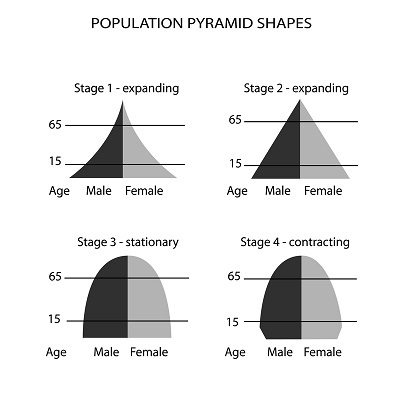

Improved knowledge of demographic reality in both current and previous populations is provided by anthropological demography by using anthropological theory and methodologies. The dynamic processes that determine population growth, structure, and differences throughout time and geography are the main focus of demography. The majority of anthropology's attention is given to the dynamics of diverse population processes that are prevalent among various populations that are residing in various geographic and environmental contexts.

Demography is the scientific study of the number, distribution, and makeup of the human population as well as changes to these factors due to migration, death, and fertility. The demographic theory aims to clarify how populations self-regulate in light of available resources. Anthropological specialities, like evolutionary anthropology, archaeology, and palaeodemography, use demographic techniques to comprehend the bio-demographic composition of historical or modern populations. There are two demographic groups that physical anthropologists are particularly interested in.
In environments undisturbed by contemporary life, the primary interest explains the underlying demographic element of the species.
How the majority of human history—nearly 99 percent—was devoted to hunting and gathering has resulted in the institutional framework and cultural elements that underlie today's demographic mechanism, as well as the underlying physiology and psychology of people.
Birth rates soon began to decline in Europe and North America as well. Because big families were no longer advantageous for several reasons, people began having fewer children. Farming families didn't need to have as many kids to labour in the fields as the number of infant deaths decreased and the amount of work performed by machines increased. There are now laws requiring kids to attend school. As a result, they were unable to work and provide for themselves. They started to take money away from the family. Birth rates eventually decreased to match mortality rates. Population growth thus fell to almost none.
Lower death rates were the result of several scientific and technological developments in Europe and North America in the 18th century: Water supplies, sewage systems, and personal hygiene have all improved as a result of a new scientific understanding of illness causes. The Industrial Revolution gave rise to new energy sources like coal and electricity. Which enhanced food delivery. Because more children could grow up because of this, the number of births increased.
Stage 1 − high birth and mortality rates cause slow population.
Stage 2 − While the birth rate stays high and the mortality rate declines, population growth accelerates.
Stage 3 − the birth rate starts to decline as Population growth slows.
Stage 4 − Population growth slows to zero when the birth rate approaches the same low level as the death rate.
Key demographic processes determine changes in population and its composition.
Two approaches can be used to research fertility. The examination of a woman's and a man's fertility is known as Micro fertility. A person's fertility can be investigated using the −
Counting the births a woman has given birth to up to that point in time.
Counting the births she has given birth to by the time she reaches the end of her childbearing years.
Concentrating on the timing and spacing of birth at various periods of the life cycle.
Macro fertility analysis calculates the rate of births in a population or subpopulation over a certain period. Macro fertility Analysis examines population fertility rather than individual fertility.
The relative frequency of fatalities in a population is referred to as mortality. An individual's behaviour and lifestyle decisions have a significant impact on mortality. These factors include the kind of weather, the amount of time spent travelling by air and other modes of transportation, the style of life, the state of housing, the density of the people, and industrial growth.
decisions have a significant impact on mortality. These factors include the kind of weather, the amount of time spent travelling by air and other modes of transportation, the style of life, the state of housing, the density of the people, and industrial growth.
Migration is known as the movement of people in a nation or beyond. A population might grow by people relocating there or shrink by people leaving. Compared to birth and death, migration may happen multiple times or never. Migration is a momentous occurrence for communities as well as for individuals. The population of the region of origin decreases as a result of migration, whereas the population of the area of destination increases.
Demography is a subfield of anthropology that use anthropological theories and methodologies to provide a deeper knowledge of demography. It combines anthropological and demographic elements, with demography focusing on the dynamic dynamics that determine population size, structure, and variations through time and space. The majority of anthropology's attention is given to the dynamics of diverse population processes that are prevalent among various populations that are residing in various geographic and environmental contexts. Data from all three sources are required for demographic analysis. The last three fundamental processes that affect population size, composition, or distribution are migration, death, and fertility.
Q1. Briefly describe the connection between demography and other fields.
Ans. Demography is the study of population dynamics and has tight ties to other social science disciplines including sociology, economics, human ecology, geography, and others.
Q2. Explain what is Census. Describe the significance of population counts.
Ans. A national census is a comprehensive process of gathering, compiling, and publishing demographic, economic, and social data related to all individuals in a nation or delineated region at a specific period.
Q3. Mention the distinctions between domestic and foreign migration.
Ans. Internal migration refers to a change in the permanent residence of an individual within a nation, involving a relocation across a political boundary in terms of geography. Migration across countries is referred to as international migration